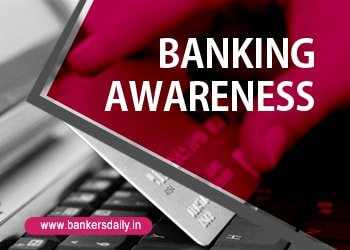Banking Awareness Quiz : Set 89
Want to Become a Bank, Central / State Govt Officer in 2020?
Join the Most awarded Coaching Institute & Get your Dream Job


Now Prepare for Bank, SSC Exams from Home. Join Online Coure @ lowest fee
Lifetime validity Bank Exam Coaching | Bank PO / Clerk Coaching | Bank SO Exam Coaching | All-in-One SSC Exam Coaching | RRB Railway Exam Coaching | TNPSC Exam Coaching | KPSC Exam Coaching
Banking Awareness Quiz : Set 89
Q.1) Open market operations, one of the measures taken by RBI in order to control credit expansion in the economy means?
(a) Sale or purchase of Govt. securities
(b) Issuance of different types of bonds
(c) Auction of gold
(d) None of the above
(e) All (a), (b) and (c)
Q.2) What is an Indian Depository Receipt?
(a) A deposit account with a Public Sector Bank
(b) A deposit account with any of depositories in India
(c) A denominated in Indian currency and are issued by a domestic depository and the underlying equity shares are secured with a custodian
(d) None of the above
(e) Both (a) and (b)
Q.3) KYC norms introduced in which of the following years?
(a) 2006
(b) 2001
(c) 2002
(d) 2004
(e) 2005
Q.4) Which of the following is an example of cash less purchase?
- Internet Banking
- Credit Card
III. Debit Card
(a) Only I
(b) Only II
(c) Only I and II
(d) Only III
(e) All of the above
Q.5) Through which of the following Indians are not authorised for banking?
(a) Online
(b) Mobile
(c) Phone
(d) Video Conferencing
(e) None of these
Q.6) The term “Balance of Trade” means?
(a) A point where the values of imports and exports are equal
(b) The term is used with reference to bilateral trade agreements with countries of CIS Block
(c) The difference between the value of the imports and exports of a country
(d) The difference between the total of transactions with foreign countries in trade, services and capital
(e) None of these
Q.7) The term “bank money” is used to denote?
(a) Loans and advance granted by the commercial banks
(b) Demand deposits used as money, i. (e) deposits with drawable by cheques
(c) Loans granted by the Reserve Bank of India to the commercial banks
(d) Money provided by the Reserve Bank of India to the Government
(e) None of these
Q.8) The bank rate means?
(a) Rate of interest charged by commercial banks from borrowers
(b) Rate of interest at which commercial banks discounted bills of their borrowers
(c) Rate of interest allowed by commercial banks on their deposits
(d) Rate at which RBI purchases or re-discounts bills of exchange of commercial banks
(e) None of these
Q.9) The term “capitalisation of reserves” is used to denote?
(a) The use of reserves for the acquisition of additional capital
(b) The use of reserves for paying-off loans raised for building up fixed assets
(c) The use of reserves for issuing bonus shares to the existing shareholders
(d) The use of reserves for the replacement of depreciated assets
(e) None of these
Q.10) “Multi-currency basket” means?
(a) A number of international currencies to which the value of SDRs is linked
(b) Selected international currencies to which the value of Asian Monetary Unit is linked
(c) Number of major international currencies to which the external value of the Indian rupee is linked
(d) The name given to a group of West European currencies.
(e) None of these






2 comments
I’m amazed, I have to admit. Rarely do I encounter a blog that’s both educative and entertaining, and let
me tell you, you have hit the nail on the head. The problem is
something not enough folks are speaking intelligently about.
I am very happy I came across this in my search for something concerning this.
3-2002